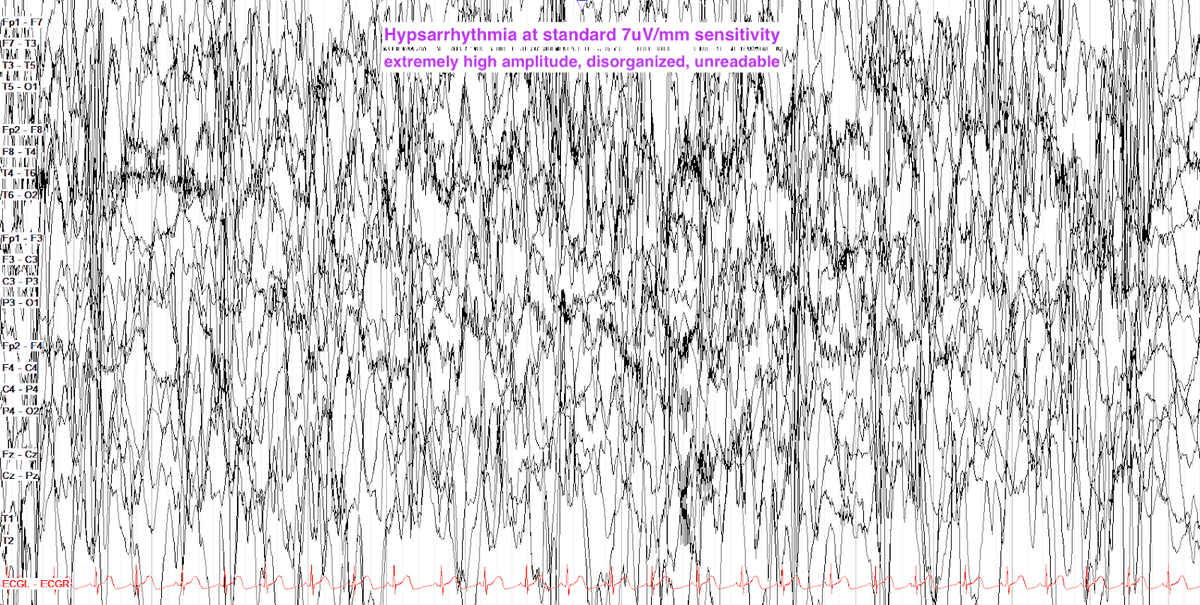EEG Sample: The Learning EEG (learningeeg.com)
Hypsarrhythmia (“hyps” means mountainous) is a very high voltage (usually >500μV), disorganized pattern first termed by Gibbs in the 1950’s. The EEG is irregular, asynchronous, with a delta slow wave pattern and multifocal spikes. The chaotic high-amplitude slow-wave activity may be intermittently replaced by a relatively low-amplitude pattern or partial flattening that lasts a few seconds. This concerning pattern commonly occurs in infants before the age of 1 year with infantile spasms (Salaam Spasms), or West Syndrome. Infantile spasms (IS) consist of a jackknife flexion movement at the waist with myoclonus involving the arms or head. The spasms begin suddenly, often at the onset of sleep, upon awakening or feeding, and often in clusters lasting 10-20 minutes. Urgent treatment is critical to prevent long term developmental delays and intractable seizures.
Patients with West Syndrome will have hypsarrhythmia on their EEG, epileptic spasms, and developmental delay/regression. Causes can include hereditary metabolic disorders, intrauterine infection, cerebral dysgenesis, tuberous sclerosis, or hypoxic encephalopathy. The Hypsarrhythmia pattern disappears by 5 years of age. The EEG becomes normal in about half of the patients, while others continue to show abnormal and differing epileptiform discharges. Normalization of the EEG does not indicate a normal neurologic state; most remain disabled by epilepsy, neurological deficits, and intellectual impairment.
Because of the exceedingly high-amplitude slow waves, waveforms are typically truncated in a recording and spikes are often hidden among large slow waves. Adjusting the sensitivity will aide in better visualization. The multifocal spikes are better visualized by using a shorter time constant or higher LFF.
Question:
Which of the following therapies is considered the 1st line of treatment for Infantile Spasms by most pediatric neurologists?
Results
#1. Which of the following therapies is considered the 1st line of treatment for Infantile Spasms by most pediatric neurologists?
Treatment options for IS include the ketogenic diet, surgical resection, prednisone or ACTH, valproate, vigabatrin, or benzodiazepines. Most pediatric neurologists still consider ACTH a first-line therapy.





